Daniel Royse's Blog, page 7
July 30, 2015
How to Self Publish Your Travel Book
 So you love to travel more than anything. So much so, that you want…no need, to find a way to make it a permanent fixture in your life. How do you make that dream a reality? One way is to write a book. Yes, easier said than done. But if you’ve done that and you’re ready to look into publishing, you’re in the right place.
So you love to travel more than anything. So much so, that you want…no need, to find a way to make it a permanent fixture in your life. How do you make that dream a reality? One way is to write a book. Yes, easier said than done. But if you’ve done that and you’re ready to look into publishing, you’re in the right place.
Having just published my first novel, The Watermelon King I’ve got a few pointers to share with you about how the publishing process works these days. I’ll tell you about what’s good, what’s bad and how I ultimately made my decision on how to get my novel published.
In today’s market place there are three general ways to publish a book, Traditional Publishing, Vanity Publishing and Self Publishing. Here we’ll discuss these three options in detail and go over the practicalities of each.
 TRADITIONAL PUBLISHING:
TRADITIONAL PUBLISHING:
This is typically what most people envision when they dream of having their book published. It comes with a certain level of prestige, a wider market and a greater level of resources at your disposal. This is where the vast majority of your favorite authors live. But there are some drawbacks.
Typically in order to get a publishing deal the traditional way you will need to first get an agent. To get an agent you will need to send them a query letter and sometimes the first few chapters of your completed manuscript. Make sure your manuscript is flawless before starting this step. Once an agent accepts you they will work on selling you to a publishing house.
The downside however is that it is very difficult to get noticed by an agent or publisher and once you do, you are stuck giving up a large portion of your revenues to the publisher (Typically 85%). Hopefully the advance and wider distribution make up for this. Also, for new writers, promotion is typically your responsibility.
VANITY PUBLISHING:
This used to be the only other option after being continuously rejected by the big publishers. Vanity publishing is when you publish your book, BUT you pay for all the upfront costs. The publisher takes no risk on your book and will usually publish just about anything you can spew out of your keyboard. You pay, you publish and then you give them to your friends as Christmas gifts.
 SELF PUBLISHING:
SELF PUBLISHING:
Yes, self publishing has forever changed the business of publishing. Now, anyone who writes anything can publish a book (eBook or hard copy) and sell it on a number of online market places for free. For the first time the power is in the hands of the artist.
As of now it exists in two main forms, eBooks and Print on Demand. An eBook is a digital file that can be read by an eReader such as Kindle or Nook. Print on Demand is exactly that. It’s a book that is printed on demand when it’s ordered which prevents excess inventory. The main point here is that these services can be utilized for free, and a commission is then sent to the author once a purchase is made. Each marketplace will take a cut of your sale but it is usually much less than traditional publishers.
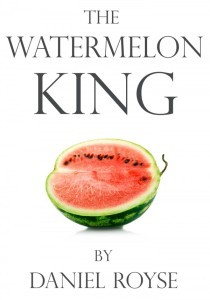 The benefit of self publishing is that anyone can publish a book for free and have it listed on a nation-wide market place like Amazon or Barnes and Noble. The downside is that YOU are in charge of promoting your book and making it stand out from all the other crap online.
The benefit of self publishing is that anyone can publish a book for free and have it listed on a nation-wide market place like Amazon or Barnes and Noble. The downside is that YOU are in charge of promoting your book and making it stand out from all the other crap online.
The most popular self publishing channels are listed below. Each of them requires a separate and painstakingly unique uploading process that will probably drive you insane, but some are easier than others.
Amazon Kindle (eBook)
Amazon CreateSpace (Print on Demand)
Barnes & Noble Nook (eBook)
Apple iBook (eBook)
Kobo
If you don’t like the idea of formatting your manuscript for each online distributer you can opt to use a multi-channel distributor such as Smashwords or BookBaby. These services make the formatting, uploading and publishing across multiple sites easier and faster. BUT they come at a cost, either up-front or a slice of your commission.
For more information on The Watermelon King or myself, feel free to check out the links below.
http://www.danielroyse.com/
https://www.facebook.com/DanielRoyseAuthor
https://twitter.com/Royse_Daniel
Amazon Kindle or Paperback
Barnes & Noble Nook
November 19, 2014
Top 8 Things To Do in Bordeaux
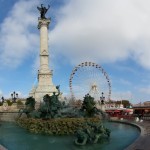 Located in southwestern France, 60 kilometers east of the Atlantic Ocean, this wine famous city has a lot to offer; it has witnessed many civilizations and is now a UNESCO heritage site. It was used as the basis of modern Paris’ architecture and recently, buildings in most neighborhoods were cleaned giving it the reputation of being “too white”. Below are some tips to help you discover different sides of this lovely city.
Located in southwestern France, 60 kilometers east of the Atlantic Ocean, this wine famous city has a lot to offer; it has witnessed many civilizations and is now a UNESCO heritage site. It was used as the basis of modern Paris’ architecture and recently, buildings in most neighborhoods were cleaned giving it the reputation of being “too white”. Below are some tips to help you discover different sides of this lovely city.
Walk or Bike Along the Quai:
Bordeaux is divided in two banks by the Garonne River, an extension of the Atlantic Ocean. The historical city was largely developed on the left bank, while the right bank was mostly industrial and is now being developed as an extension to the city. A rarely acknowledged fact, is that Bordeaux, and this quai specifically, was a central stop for 508 slave trade trips between 1672 and 1837 that resulted in over 150,000 Africans being deported to the Americas.
The quai is a great location for walking, biking and having a picnic. Besides the various buildings, cafes and outlets spread over the long of the quai, you will come across the bourse, a large water mirror and a plaque, the only landmark acknowledging Bordeaux’ role in the slave trade.
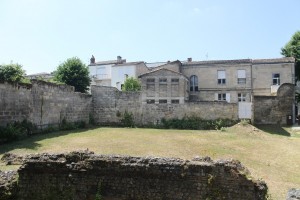 Palais Gallien:
Palais Gallien:
One of the very few Roman archeological sites that are still standing in Bordeaux, this monument dates back to the early days of roman invasion of France. The few walls still standing of the large amphitheatre that once was, are beautifully incorporated into the nearby residential architecture to give the area a different impression. Admission is free.
Walk Through Old Bordeaux:
There is no better way to experience the charm of this city than walking especially, in its older neighbourhoods. With buildings and monuments dating as far back as the 15th century, you will find many hidden secrets. Luckily for you, the city makes it very easy for you to do so with street markets, restaurant squares and a theatre that once was a church.
Porte Cailhau:
One of the still standing gates that once surrounded the city, built is 1495 with sculptures as a tribute to King Charles VIII who conquered Napoli with the aid Bordeaux’ Archbishop at the time. In addition to being a historical landmark, the gate has a few interesting details such as the slot where the sliding portcullis were and the bases from which the weapons used to be fired.
Marché des Capucins:
Founded in 1797, it is a great place when looking for fresh and local products, especially seafood something the city is famous for. There you will find all kind of fresh meats, vegetables and baked goods, as well as clothes, hats and sunglasses. It is a great place for a Bordeaux specific lunch.
Porte and Eglise St. Eloi and Grosse Cloche:
It includes St. Eloi church, the Grosse Cloche (great bell). The church is one of the first Gothic monuments to be built in the city in the twelfth century; it became a squat space for the good part of 30 years, before becoming a working church again in 2007.
The Grosse Cloche, its two towers, its gold‐plated leopard shaped weather vane and the solar dial clock remain to this date. Built in the 15th century, near the old city hall that is now completely destroyed, the bell was used to mark important times of the year such as the beginning of the grape picking season.
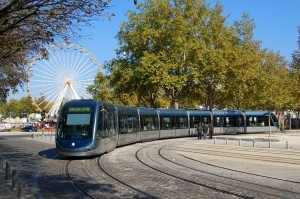 Tram Ride:
Tram Ride:
The tram system extends alongside the river on the left bank of the city. Since Bordeaux is a walking friendly city, you may not need to take the tram, however, its three lines spread across various monuments of the city and a tram ride would show you some monuments of the city that you may not visit otherwise.
Saint Emilion:
This small city, about an hour away from Bordeaux is a great destination for a one day escapade. Famous for being a wine town with early vines planted in the 2nd century by the Romans, St. Emilion is also a UNESCO heritage site. Situated on the Pilgrimage route to Santiago de Compostela, it has many churches and attractions built as early as 11th century that appeal to those who are not wine enthusiast. The SNCF (French railway system) frequently goes between Bordeaux and St. Emilion for a low fee.
November 12, 2014
Prague: A Walk Through History
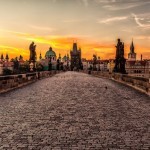 Prague is simply beautiful and overwhelming. Every standing building is a piece of art. It is old and has witnessed the rise and fall of many civilizations from the Romans all the way to the communists, two millennia later. If the walls and stones could talk, they would each have a history lesson to share. Today, safe, historically rich and relatively cheap, Prague is a hot tourist destination to the point of leaving young Praguers unable to speak their own language in their own town city.
Prague is simply beautiful and overwhelming. Every standing building is a piece of art. It is old and has witnessed the rise and fall of many civilizations from the Romans all the way to the communists, two millennia later. If the walls and stones could talk, they would each have a history lesson to share. Today, safe, historically rich and relatively cheap, Prague is a hot tourist destination to the point of leaving young Praguers unable to speak their own language in their own town city.
Besides visiting the famously renowned spots, such as the astronomical clock, Charles Bridge, “Old New” Synagogue, and Old Town Square, there are many ways to discover Prague and learn its history and culture. Below are essential activities to do in the Czech capital.
Walking Tour:
Like NYC and Paris, you could live years in Prague and still discover new things. A guided walking tour is essential to help you understand the city, appreciate its history and locate the monuments, squares and museums, you want to spend more time discovering later on. Many organizations offer tours by donations, guided by people who know the city inside out in English and a few other languages as well. Averaging between three and five hours the tours will introduce you to the city, give you an overview of its long history and point out some of its famous or hidden secrets. It is a good idea to do the tour on your first day in the city.
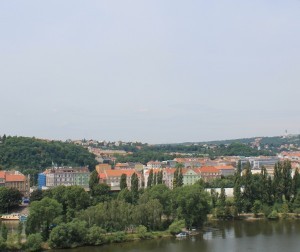 Vysherad:
Vysherad:
This fort hill that once served to protect the city from invasions is considered by some as the first settlement that now forms Prague, although this claim has never been verified. Vysherad is the perfect spot to hide from the crowd and relax while still learning about the city and enjoying a great view of both banks and the Vltava River. Big, quiet and covered with greenery, Vysherad is a home for the Basilica of St Peter and Paul, the oldest Rotunda from the 11th century, various sculptures and the Vysherad cemetery where some politicians, artists and performers from the Czech history are laid to rest.
Prague Castle:
Being one of Prague’s most renowned attractions, the subject of Kafka’s The Castle is not a hidden secret; however, it is far from being just a simple castle. The secret lies in the beauty of its buildings, stones and stairs. When climbing out to the location of the Prague castle, one will find an agglomeration of castles, churches, gardens, summer houses, museums, hidden stairs as well as overpriced cafes and water stands. Considered as one of the biggest castles, the castle itself was once the home for catholic figures, emperors and the presidents of Czechoslovakia. The Prague Castle was completed over four centuries and represents about every single architectural style in the last millennia.
Defenestration Tour:
In a city that witnessed so many cultures, conflicts and architectural references, unusual events such as defenestration do unfortunately occur. Started as an expression of conflicts between the Hussites and the city council in the 15th century, defenestration as the name indicates is nothing but the act of throwing people out of a window most often following a severe argument between political opponents. Despite, referring to two specific events, defenestration is known to have occurred more often in the history of Bohemia. While there is nothing particularly charming about the idea of defenestration, conflicts and battle grounds are huge markers in any city’s history and this is just another way to discover Prague the city through a specific incident in Prague’s history.
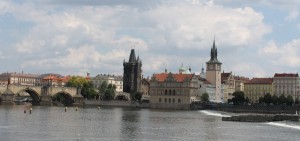 Walk along both river banks:
Walk along both river banks:
Pick a nice afternoon to walk along the river banks. There are enough bridges to cross from one bank to another and there are many monuments, parks, exhibitions, museums and historical buildings on either side. Take your time, find a patio to have a drink on and look over the city and all its wonders. It will leave you with pretty photos, lovely memories and you will stumble across a building, a story or a landmark that will make your best memory of Prague.
Prepare to be overwhelmed, awed and to receive a history lesson as you enjoy the wonders of this lovely city.
July 29, 2014
Exploring Finland: Helsinki in the Summer
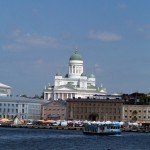 A stylish and compact seaside capital city, with all the charms of Europe, which really comes alive in the summer, Helsinki is hip and laidback, with an air of elegance and coolness that is felt as soon as you step in the city. From airy, open parks to crowded bars and clubs, there really is everything in Helsinki to suit all moods and occasions.
A stylish and compact seaside capital city, with all the charms of Europe, which really comes alive in the summer, Helsinki is hip and laidback, with an air of elegance and coolness that is felt as soon as you step in the city. From airy, open parks to crowded bars and clubs, there really is everything in Helsinki to suit all moods and occasions.
The city centre is very easy to navigate with a map acquired from your accommodation establishment. You can also hire a bike as a cheap alternative; otherwise the public transport is quite easy to use. The tram lines 2 and 3 are especially good for sightseeing as the take you to some of the tourist spots in the city. The street names will throw you a bit, but they are easy to remember.
WHAT TO SEE AND DO:
Seurasaari:
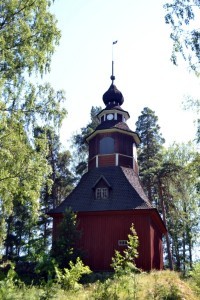 Seurasaari is located 20 minutes north of Helsinki and can be reached with bus 24. It is a popular spot with the locals in the summer; the island is brimming with wildlife, forest-like scenery and secret beaches and paths. There is also an open air museum filled with 18th to 20th century Finnish wooden buildings. During the summer, there are workshops and events organized at the museum showcasing traditional handicrafts, folklore and customs from Finland.
Seurasaari is located 20 minutes north of Helsinki and can be reached with bus 24. It is a popular spot with the locals in the summer; the island is brimming with wildlife, forest-like scenery and secret beaches and paths. There is also an open air museum filled with 18th to 20th century Finnish wooden buildings. During the summer, there are workshops and events organized at the museum showcasing traditional handicrafts, folklore and customs from Finland.
Esplanade Park:
An inner city sanctuary is the Esplanade Park, which is a very popular spot with the locals in the summer evenings after a spot of shopping is done on one of the two main shopping streets. It is smaller than the other parks, but it has plenty of green grass, benches and terraces to sit and enjoy the evening breeze. There is also a statue of the national poet, J. L. Runeberg to admire. There are also free concerts held on Espa Stage throughout the summer.
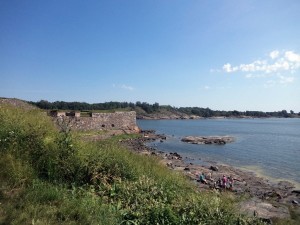 Suomenlinna Fortress:
Suomenlinna Fortress:
Suomenlinna Fortress Island is another great place to have a picnic, a swim and to learn and explore a piece of Finnish history. From a stronghold fortress it has been transformed to a green and charming district, home to 800 residents, that you can take hours looking through the “secret tunnels” and charming 18th and 19th century buildings. It was founded on the islands in 1748, and throughout the whole island there are still remnants of the time when Finland was under Swedish rule to the period of Russian rule in the 19th century. You can catch the ferry from the Market Square that takes about 15 minutes to reach the island; you can use the normal bus ticket or Helsinki card to as ticketing. Otherwise, there is also a water taxi that runs in the summer, but this is a private company and the tickets will need to be bought onboard.
The Ateneum:
The Ateneum is also known as the Finnish National Gallery. It includes a Finnish art collection from the 1750s to the 1960s, and western art from late 1800s to 1950s. The building itself is a marvel inside, with marble columns and grand staircases. It is one of the most popular museums in Finland and it is a not-to-be-missed attraction.
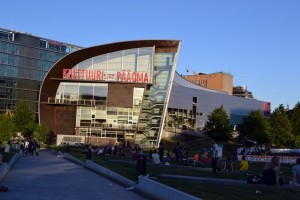 Kiasma:
Kiasma:
Kiasma is the Contemporary Art Museum. It has some rather thought-provoking and surprising exhibits, but even if you are not into this type of art, it is still worth going to admire the airy, modern architecture of the building. It was opened in 1998 and designed by Steven Holl. It presents 3 major exhibitions a year, alongside smaller exhibits. The exhibitions are a mixture of Finnish and international artists.
Parliament House:
Parliament House is and rather imposing piece of architecture in the heart of Helsinki. It is built in the style of 1920s Classicism. It is open to the public at set times, and groups have to book in 3 days in advance. The parliament can be observed by the public on Tuesdays to Fridays.
Helsinki City Museum:
The Helsinki City Museum offers a window into Helsinki’s past. There are also photography exhibitions held and the Kino Engel cinema shows films about Helsinki daily in Finnish and Swedish, and in English during summer.
Shopping:
There are many shopping options in Helsinki. Aleksanterinkatu and the Esplanadi are two main shopping streets filled with major international and Finnish designers. Along Mannerheimintie, there are also many shopping centers like the Forum and Kamppi. The best souvenir shopping can be done at the local indoor market and at the must-do Markets by the Sea, located in Market Square.
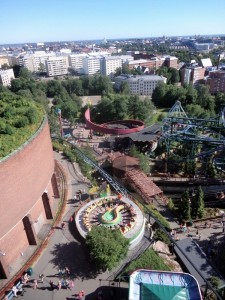 Linnanmäki:
Linnanmäki:
Linnanmäki is a fun-filled adventure park set just outside the city centre, easily reached by catching Tram 3 from the city centre. There are several ticketing options: you can buy a wristband which will give you access to all the rides in the park, or you can pay individually per ride. The entry to the park is free and there are also some free rides you can enjoy. There is a good mixture of rides for young and old. The more adventurous can enjoy the various roller-coasters and thrill-seeking rides, while quieter patrons can enjoy the gigantic Ferris Wheel and other slower rides. There are plenty of rides for kids that they will bountifully enjoy.
July 14, 2014
Romania: Top Things to See and Do (Tourist Attractions)
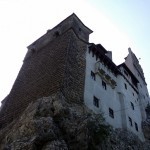 Unspoiled country side with green rolling hills, castles and fortresses, towns rich in history and cities vibrant with night life and shopping describe Romania to a tee. There is something for everyone in this underrated country nestled in Eastern Europe. Because of its relative compactness, and well connected transport system, you can catch a train, bus or self-drive almost anywhere in a couple of hours.
Unspoiled country side with green rolling hills, castles and fortresses, towns rich in history and cities vibrant with night life and shopping describe Romania to a tee. There is something for everyone in this underrated country nestled in Eastern Europe. Because of its relative compactness, and well connected transport system, you can catch a train, bus or self-drive almost anywhere in a couple of hours.
WHAT CAN YOU SEE AND DO?
Mountains:
With pristine snow during winter that is perfect for skiing to green, lush vegetation during summer that is perfect for exploring, the Carpathian Mountains are great to visit during any season. There are many places across Romania that you can stay and experience various activities. Sinaia is the most popular tourist resort town in the mountains, and it is close to various popular attractions. The train between Bucharest and Sinaia takes about one and a half hours.
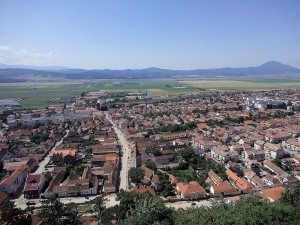 There are many natural reserves and hiking trails on offer across Romania. In Berca, near Buzau there are mud volcanoes, which are a rare phenomenon and create a barren, otherworldly landscape. There are also many caves in the mountains, Valea Cetati Cave in Rasnov, which is a great stop if you are also visiting the Rasnov Fortress, Bear Cave, famed for its stalagmites and stalactites and 140 bear fossils, and Scărișoara Cave, whichis one of the biggest ice caves in Romania, and is located in the Apuseini Mountains.
There are many natural reserves and hiking trails on offer across Romania. In Berca, near Buzau there are mud volcanoes, which are a rare phenomenon and create a barren, otherworldly landscape. There are also many caves in the mountains, Valea Cetati Cave in Rasnov, which is a great stop if you are also visiting the Rasnov Fortress, Bear Cave, famed for its stalagmites and stalactites and 140 bear fossils, and Scărișoara Cave, whichis one of the biggest ice caves in Romania, and is located in the Apuseini Mountains.
Sea:
The Black Sea coast is a must do destination in the summer for tourists and locals alike. They all flock to the various resorts on the beaches between Mamaia to Mangalia, in the lower part of the Romanian coast. Constanta is the main port and sea city in Romania. It is an important economic and cultural hub, with a historic old centre, archaeological riches, great entertainment options and lively beaches and nightlife. Mamaia is a great destination if you want a luxurious retreat, with most hotels ranging from 4 to 5 stars. Costinesti is a popular option with students and younger people, and Vama Vechie is host to Liberty Parade, which is held at the end of July and it is one of the biggest electro music festivals in the country.
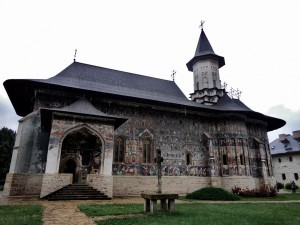 Monasteries and Abbeys:
Monasteries and Abbeys:
The Bucovina region has is home to many of the famous painted monasteries of Romania. Voronet Monastery is well known for the “Voronet Blue” that is unique to the monastery. It is also known as the “Sistine Chapel of the East” for its splendid painted exterior and interior walls. Sucevita Monastery boasts the largest amount of painting of all the monasteries in the region; it is famous for the depiction of the Ladder to Paradise. This used to be a princely residence as well as a monastery, and now houses a museum filled with an impressive region of religious and historic artifacts. Putna Monastery is another great example of the region, boasting a rich heritage from Stephen the Great and a big, informative museum.
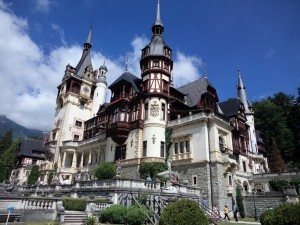 Castles and Fortresses:
Castles and Fortresses:
Due to a rich history starting with the Saxons in the 14th century and spanning across the middle ages, Romania has many castles and fortresses doted all over the country. Transylvania’s famous Bran Castle is mostly known for its ties with Bram Stoker’s Dracula. It is impressively built on the side of a 200 feet rock face, and used to be the summer residence of the Queen Marie of Romania from 1920 to 1935. Peles Castle, in the Bucegi Mountains, close to Sinaia, is considered one of the most stunning castles in Europe. It is a breathtaking example of German new-Renaissance architecture; inside the rooms are amazingly furnished with Murano chandeliers, art from great European artists, and teak furniture. Rasnov Fortress has an amazing history starting in 1331, when it was built by Teutonic Knights, spanning to 1848 when it was abandoned. It has been restored to its former glory and now includes a museum and visitors can take in 360° panorama views of the region from atop the highest point of the ruins, there is also a museum that houses a skeleton hidden in the ground and several secret maze-like passageways that will keep you entertained for a few hours.
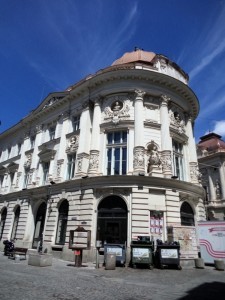 The Capital:
The Capital:
Bucharest is the capital city and the hub of Romania. It used to be referred to as “Little Paris” in the 1900, as it boasts Belle Époque architecture, especially found in the Old Centre, and various museums, buildings and landmarks that are rich in history and culture. Victory Avenue is the oldest and most picturesque street in Bucharest; take a stroll down from Piata Victoriei to Piata Natiunilor Unite to find remarkable historic architecture such as Revolution Square, CEC Headquarters, and National History Museum. The Old Centre has been remodeled to become a vibrant nightlife spot with lots of bars, taverns and restaurants for all tastes. Besides these, there are also many old building such as the Old Princely Court and Church that was built by Vlad the Impaler in the 15th century.
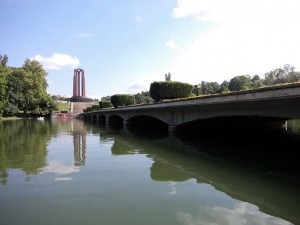 During the day there are many art galleries, coffee shops, and antique shops to browse while strolling through the cobbled streets. For those that are looking for a quiet place to relax and have a picnic, there are also many green areas in Bucharest such as Cismigiu Gardens, Herastrau Park or the Botanic Gardens, where you can relax, have a boat ride or stroll in the shade while experiencing the local flora.
During the day there are many art galleries, coffee shops, and antique shops to browse while strolling through the cobbled streets. For those that are looking for a quiet place to relax and have a picnic, there are also many green areas in Bucharest such as Cismigiu Gardens, Herastrau Park or the Botanic Gardens, where you can relax, have a boat ride or stroll in the shade while experiencing the local flora.
June 27, 2014
Where are the Best Casinos Asia has to Offer?
 Asia has become the continent to be reckoned with when it comes to tourism. With new developments, modernization and a huge effort to be a tourist draw, many Asian countries are coming up the ranks to become the most popular tourist destinations in the world. The biggest casino complex in the world is located in Macau and it boasts some of the most luxurious casino’s in its pursuit of catering to the gambling industry. With so many Asian countries lifting the gambling laws and turning entertainment complexes into places of paradise, many people are heading to Asia for their gambling holidays rather than playing at an online casino such as http://www.gamingclub.com/au at home or visiting the obvious destinations such as Las Vegas. The gambling industry provides lots of jobs and revenue which is great for the locals too.
Asia has become the continent to be reckoned with when it comes to tourism. With new developments, modernization and a huge effort to be a tourist draw, many Asian countries are coming up the ranks to become the most popular tourist destinations in the world. The biggest casino complex in the world is located in Macau and it boasts some of the most luxurious casino’s in its pursuit of catering to the gambling industry. With so many Asian countries lifting the gambling laws and turning entertainment complexes into places of paradise, many people are heading to Asia for their gambling holidays rather than playing at an online casino such as http://www.gamingclub.com/au at home or visiting the obvious destinations such as Las Vegas. The gambling industry provides lots of jobs and revenue which is great for the locals too.
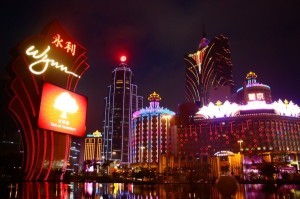 Macau has become the premier destination for casino gambling and figures show that it brings in more revenue than Las Vegas. The Lisboa casino is more than 50 years old and thanks to multiple renovations and an effort to continually modernize and update, it is one of the best casinos in Macau. A three story complex built in the 1960′s, it also has a hotel with 927 rooms. Singapore is behind Macau in second place as one of the best casino countries in Asia even though it only has 2 casinos! But it is quality not quantity that matters when we are talking about casinos, and the Marina Bay Sands Resort boasts three towers, a sky terrace, an infinity pool, lots of restaurants, nightclubs and restaurants. Over in South Korea, none of the locals can gamble in the casino’s, so don’t be surprised when you don’t see any. Despite this rule for the locals, The Paradise Casino Walker Hill in Seoul is the biggest casino in Korea and has been very popular amongst tourists for decades.
Macau has become the premier destination for casino gambling and figures show that it brings in more revenue than Las Vegas. The Lisboa casino is more than 50 years old and thanks to multiple renovations and an effort to continually modernize and update, it is one of the best casinos in Macau. A three story complex built in the 1960′s, it also has a hotel with 927 rooms. Singapore is behind Macau in second place as one of the best casino countries in Asia even though it only has 2 casinos! But it is quality not quantity that matters when we are talking about casinos, and the Marina Bay Sands Resort boasts three towers, a sky terrace, an infinity pool, lots of restaurants, nightclubs and restaurants. Over in South Korea, none of the locals can gamble in the casino’s, so don’t be surprised when you don’t see any. Despite this rule for the locals, The Paradise Casino Walker Hill in Seoul is the biggest casino in Korea and has been very popular amongst tourists for decades.
June 26, 2014
Indonesia: The Kai Islands (Kei Islands)
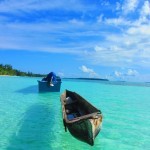 Nestled into the turquoise waters of the Banda Sea, the largely untraveled Kai islands are a microscopic jewel in the Indonesian Archipelago. With the vast majority of backpackers and travellers skipping these paradise isles for the easier prey of Sulawesi, Bali and Lombok, nine times out of ten you will be the only Robinson Crusoe on your very own deserted beach.
Nestled into the turquoise waters of the Banda Sea, the largely untraveled Kai islands are a microscopic jewel in the Indonesian Archipelago. With the vast majority of backpackers and travellers skipping these paradise isles for the easier prey of Sulawesi, Bali and Lombok, nine times out of ten you will be the only Robinson Crusoe on your very own deserted beach.
Even though the Kai’s have been pegged as having some of the finest beaches this planet has to offer, development is sloth-like and tourism very low. Strolling along the sugar white sand of Kai Kecil with Palm trees bending overhead and vibrant sea snakes lazing in the shallows, you would be forgiven for thinking that you had died and gone to your very own tropical heaven.
These islands do not offer the same nightlife as the fabled Gili islands; neither do they provide the diving and hiking of Borneo or Sulawesi. What the Kai islands do supply is peaceful solitude, unspoilt serenity and intense sunshine. The order of the day is hanging a hammock and sipping a beer as the crystal clear waves wash over the star fish and coconuts that dot the shore.
If snoozing in a hammock with a chilled beer and uninterrupted sunshine becomes boring, there are plenty of things to see and do to fill your days. The Guan Lian Hawan caves, not far from the village of Letvuan provide the chance to swim in a fresh water lagoon within the mouth of the small cave. The hike down to the cave is brimming with tropical birds and massive butterflies and is worth a visit in itself; having said that the utterly transparent yet vivid blue waters are a captivating entity that is definitely the main attraction.
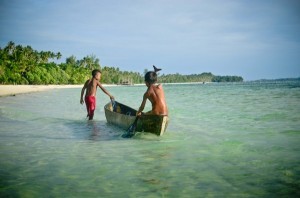 The petroglyphs at Ohoideratas provide another break from the copious beach bumming that the Kais provides. At low tide it is possible to walk over the sand flats and stare up at the different images of ancient warriors, the sun and various other images. The walk across takes some time but the tide is low for several hours so you have plenty of time to take in the petroglyphs and also watch the locals drag in the seaweed that they harvest and sell.
The petroglyphs at Ohoideratas provide another break from the copious beach bumming that the Kais provides. At low tide it is possible to walk over the sand flats and stare up at the different images of ancient warriors, the sun and various other images. The walk across takes some time but the tide is low for several hours so you have plenty of time to take in the petroglyphs and also watch the locals drag in the seaweed that they harvest and sell.
With what can only be described as perfect beaches alongside some embarrassingly friendly locals to accompany them, the Kai islands can definitely seem too good to be true. Luckily (and unluckily) getting to these emerald green, secluded islands is a challenge which demands that you will have to rack up some serious air miles. There are no direct flights to the Kai’s and if you are travelling from a place like Bali and are on a budget, prepare to plane hop.
Starting from Denpasar in Bali you will hop on a one hour flight to the Javanese town of Surabaya. Then, you must make a quick dash through the small airport to your next flight which takes you to the town of Makassar on Sulawesi. After an even faster sprint, through an even smaller airport you will find yourself on your third flight of the day to Ambon, a small island to the north of your destination.
Provided that you don’t get caught up in the frequent delays and cancellations, you will now board the last and smallest aircraft which will take you to the beautiful Kai Islands. Upon arrival you must wait in a small building to the side of the airstrip and wait for your luggage to be launched through a small hole in the side of the wall with ‘Baggage claim’ written above it. After collecting your bag amid the scramble of locals, you must do you best to find transport to your accommodation if you haven’t already arranged it.
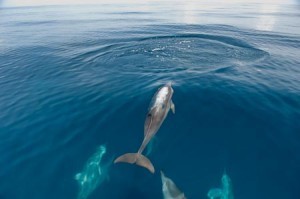 Do not despair. Although the journey can be arduous and sometimes frustrating, you will forget all your worries the second you step out of the airport and into the laidback pace of the tiny Kai Islands. Do not expect a Best Western with an infinity pool and don’t rely on a Radisson right by the beach, this is homestay territory. Make sure you confirm that your hosts will provide fresh water and three meals a day and try and do a bit of research before landing. The majority of the time you will be met by accommodating and enthusiastically friendly locals who make the trip as worth will as the lush and idyllic slice of utopia just a few steps away from your front door.
Do not despair. Although the journey can be arduous and sometimes frustrating, you will forget all your worries the second you step out of the airport and into the laidback pace of the tiny Kai Islands. Do not expect a Best Western with an infinity pool and don’t rely on a Radisson right by the beach, this is homestay territory. Make sure you confirm that your hosts will provide fresh water and three meals a day and try and do a bit of research before landing. The majority of the time you will be met by accommodating and enthusiastically friendly locals who make the trip as worth will as the lush and idyllic slice of utopia just a few steps away from your front door.
June 24, 2014
New Zealand: Exploring Rotorua
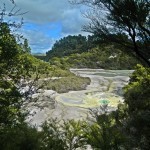 Rotorua is based on the North Island of New Zealand, in the Bay of Plenty region. It is nicknamed “Sulphur City” due to the rotten egg smell coming from the thick sulphuric deposits hidden around the city. It is a popular destination for both local and international tourists due to its unique geothermal springs, geysers and hot mud pools. Besides these, there is a plethora of other attractions in and around the city for all sorts of tastes and preferences.
Rotorua is based on the North Island of New Zealand, in the Bay of Plenty region. It is nicknamed “Sulphur City” due to the rotten egg smell coming from the thick sulphuric deposits hidden around the city. It is a popular destination for both local and international tourists due to its unique geothermal springs, geysers and hot mud pools. Besides these, there is a plethora of other attractions in and around the city for all sorts of tastes and preferences.
It is the 10th largest city in New Zealand, with a population of 56,000 people. It has a compact city centre, filled with picturesque timber buildings mixed with more modern architecture.
WHAT CAN YOU SEE AND DO?
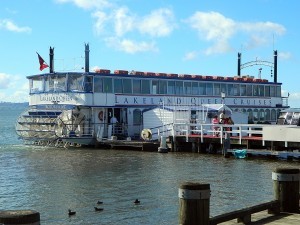 Water Activities and Tours:
Water Activities and Tours:
There are an abundance of options if you want to experience Rotorua by water. New Zealand Riverjet offers jet boat cruises down the Waikato River, through the stunning Tutukau Gorge and includes a visit to Orakei Korako Geothermal Wonderland. This is an excellent tour for visitors looking to experience some adventure, while getting the best of the region in a short period of time. The Lakeland Queen is the largest boat on Lake Rotorua, a stern wheel paddleboat, and runs daily breakfast/lunch/coffee cruises. This is a majestic, well appointed boat that will remind you of the boats on the Mississippi River in years gone by. Otherwise, if cruises are not your cup of tea, there are also options for whitewater rafting, kayaking and canoeing that will allow you to experience the best of Rotorua.
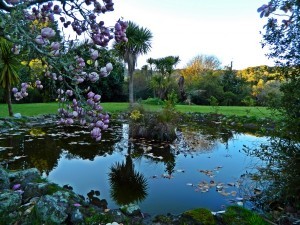 Walking and Hiking:
Walking and Hiking:
There are several walking and hiking tracks in and around the city that present stunning views, wildlife encounters and experiences close to nature. The Government Gardens are a big attraction in the city centre itself, and are home to the Rotorua Museum of Art and History, the Klamath Falls Rose Gardens, Te Runanga Tea House and Band Rotunda. The Hamurana Springs is located 15 – 20 minute drive from the city, and is an 800 meter easy walking track through beautiful, gigantic California Redwood trees, gorgeous blue waters and many bird species that reside in the wildlife sanctuary. For the more exploratory walkers, Waikaremoana Discovery Tour run 4-day walking tours through the spectacular Lake Waikaremoana, Whirinaki Forest and Te Urewera National Park.
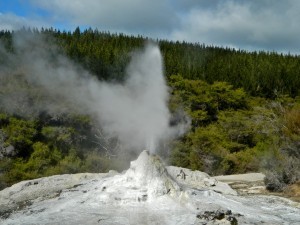 Geothermal Attractions:
Geothermal Attractions:
The most famous attractions in the area, Rotorua has a diverse range of parks and places offering the chance to experience geothermal springs, mud pools and geysers. Waiotapu Thermal Wonderland offers colorful formations of volcanic craters, hot and cold springs, steaming pools and the Lady Knox Geyser that erupts daily at 10.15am. Hells Gate Geothermal Park and Mud Bath Spa has the most active geothermal field in NZ, and has 50 acres of a variety of thermal features including steaming fumaroles, pools of boiling mud, and the Kakahi Falls, which is the largest hot waterfall in the Southern Hemisphere. You can also indulge in the geothermal mud paths of Hells Gate in the new Mud Bath and Spa Complex that is landscape with native planting and attractive scenery. A small stroll from the Tudor Bath House in Government Gardens is located Sulphur Point, a 2hour long path that follows the lakeshore to Sulphur Bay (Motutara Point).
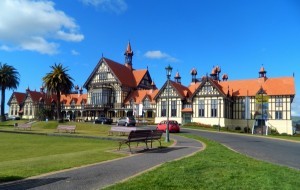 Arts and Culture:
Arts and Culture:
The Buried Village of Te Wairoa displays what life was like before, during, and after the volcanic eruption of Mt Tarawera in the picturesque village of Te Wairoa. This quaint and insightful museum has been painstakingly put together by three generations of the Smith family. The Rotorua Museum has been recently restored and it is a must see when coming to Rotorua. The rich Maori culture, local history and volatile landscape come alive through various multimedia displays. The museum is located in the Bath House building, in Government Gardens. Te Amorangi Museum holds an eclectic collection from 1920s era, and shares the space with Cozy Cottages and Rotorua’s first jail. Here you can see horse drawn carts, steam and stationery engines, and a remarkable selection of Mamaku’s past tramways and sawmills.



